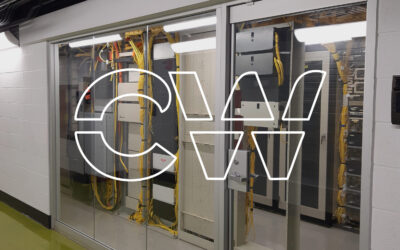Carrier hotels, also known as carrier-neutral hotels or data centers, are secure facilities where multiple telecommunications carriers and network providers interconnect to exchange traffic and data. These buildings house the physical infrastructure that underpins the internet, including servers, routers, and fiber-optic cables. By colocating their equipment in carrier hotels, companies can access a wide array of networks and services, enhancing connectivity and reliability.
During the heyday of the late 1990s, carrier hotels sprang up in major cities around the world, particularly in key hubs such as New York, London, and Tokyo. These facilities were at the heart of the telecommunications revolution, facilitating the rapid transmission of data and the expansion of internet services. However, the euphoria of the dot-com era was short-lived, and the telecom bubble soon burst, leading to a period of uncertainty and upheaval in the industry.

The Telecom Bubble Burst Looms
The collapse of the telecom bubble in the early 2000s brought about significant challenges for carrier hotels. Many telecommunications companies that had invested heavily in infrastructure found themselves saddled with debt and struggling to stay afloat. Bankruptcies and consolidations were widespread, leading to a wave of consolidation in the carrier hotel sector as well. Some facilities closed down, while others changed ownership multiple times as industry players sought to navigate the turbulent waters of the post-bubble landscape.
Amidst the turmoil, carrier hotels faced a fundamental shift in their business models. Previously, they had thrived on the demand for high-speed connectivity and data storage fueled by the dot-com boom. Now, they needed to adapt to a new reality characterized by tighter budgets, increased competition, and a more cautious approach to investment. Rather than simply providing space and connectivity, carrier hotels had to differentiate themselves by offering value-added services such as managed hosting, cloud computing, and cybersecurity.
The challenges of the post-bubble era forced carrier hotels to innovate and diversify their offerings. Many facilities expanded their service portfolios to include colocation services for cloud providers, content delivery networks (CDNs), and other emerging technologies. Others invested in upgrading their infrastructure to support higher bandwidths and faster speeds, anticipating the growing demand for data-intensive applications such as streaming video and virtual reality.
In addition to technological advancements, carrier hotels also had to contend with regulatory and market forces that shaped the telecom landscape. Issues such as net neutrality, privacy regulations, and antitrust concerns had a significant impact on the industry, influencing everything from pricing structures to interconnection agreements. Carrier hotels had to navigate these complex legal and regulatory frameworks while also balancing the needs of their diverse customer base.
Despite the challenges and uncertainties, carrier hotels have proven to be resilient entities that continue to play a crucial role in the telecommunications ecosystem. As the demand for digital connectivity continues to grow, fueled by trends such as remote work, e-commerce, and the Internet of Things (IoT), carrier hotels remain essential hubs for facilitating the exchange of data and the delivery of services. Moreover, their ability to adapt and evolve in the face of adversity demonstrates their enduring importance as critical infrastructure for the digital age.



